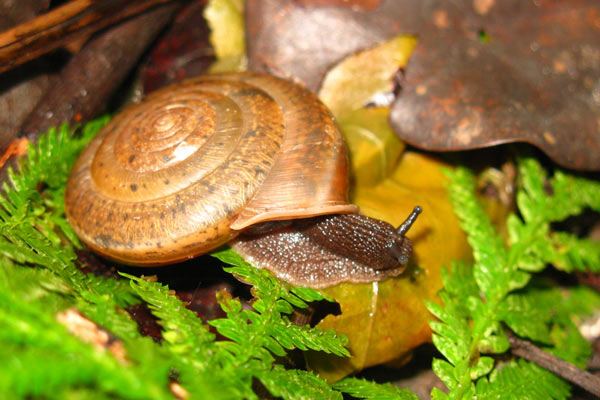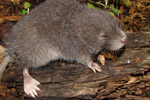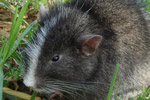Scientists have named new species after celebrities, fictional characters, and even the corporations that threaten a species’ very existence, but a new snail may be the first to be named after a global human rights movement: the on-going struggle for same-sex marriage. Scientists have named the new Taiwanese land snail, Aegista diversifamilia, meaning diverse human families.
“When we were preparing the manuscript it was a period when Taiwan and many other countries and states were struggling for the recognition of same-sex marriage rights. It reminded us that Pulmonata land snails are hermaphrodite animals, which means they have both male and female reproductive organs in single individual,” explained co-author Yen-Chang Lee. “They represent the diversity of sex orientation in the animal kingdom. We decided that maybe this is a good occasion to name the snail to remember the struggle for the recognition of same-sex marriage rights.”
Same sex marriage is currently not legal in Taiwan, and a bill in the government proposing to legalize same-sex marriage has been stalled by the Parliament’s judiciary committee since October 2013. A recent rally in favor of legalizing same-sex marriage in the country attracted thousands.

The new snail named after the struggle for same-sex marriage: Aegista diversifamilia. Photo by: Chih-Wei Huang.
The new land snail that celebrates “diverse human families,” was split from another land snail described in 1884: Aegista subchinensis. For over a century, scientists thought this species was found across Taiwan, however in 2003 Lee noticed that the eastern population of Aegista subchinensis had a larger and flatter shell.
DNA results bore this out, determining that the eastern population was indeed a distinct species.
“When we examined the phylogeny from each gene it suggested that the eastern Aegista subchinensis was more closely related to Aegista vermis, a similar land snail species inhabited in Ishigaki Island, than the western Aegista subchinensis,” lead author and PhD candidate with National Taiwan Normal University, Chih-Wei Huang, said.
Ishigaki Island is a Japanese island about 300 kilometers off the eastern coast of Taiwan.
The scientists believe that Taiwan’s Central Mountain Range and the Lanyang River proved geographic barriers between the western snail, Aegista subchinensis, and the new eastern snail, Aegista diversifamilia.
Worldwide, same-sex marriage has been legalized in 17 countries to date in addition to portions of the U.S. and Mexico.
Citations:
- Huang C-W, Lee Y-C, Lin S-M, Wu W-L (2014) Taxonomic revision of Aegista subchinensis (Möllendorff, 1884) (Stylommatophora, Bradybaenidae) and a description of a new species of Aegista from eastern Taiwan based on multilocus phylogeny and comparative morphology. ZooKeys 445: 31–55. doi: 10.3897/zookeys.445.7778
Related articles
Did the world’s only venomous primate evolve to mimic the cobra?

(09/29/2014) The bite of a slow loris can be painful, and sometimes even lethal. After all, this cute-looking YouTube sensation is the only known ‘venomous’ primate in the world—a trait that might have strangely evolved to mimic spectacled cobras, according to a recent paper. Mimicry in mammals is rare. But anecdotal evidence and studies in the past have noted the uncanny cobra-like defensive postures, sounds, and gait in slow lorises.
Scientists uncover six potentially new species in Peru, including bizarre aquatic mammal (photos)

(09/25/2014) A group of Peruvian and Mexican scientists say they have uncovered at least six new species near South America’s most famous archaeological site: Machu Picchu. The discoveries include a new mammal, a new lizard, and four new frogs. While the scientists are working on formally describing the species, they have released photos and a few tantalizing details about the new discoveries.
In the shadows of Machu Picchu, scientists find ‘extinct’ cat-sized mammal

(09/25/2014) Below one of the most famous archaeological sites in the world, scientists have made a remarkable discovery: a living cat-sized mammal that, until now, was only known from bones. The Machu Picchu arboreal chinchilla rat (Cuscomys oblativa) was first described from two enigmatic skulls discovered in Inca pottery sculpted 400 years ago.